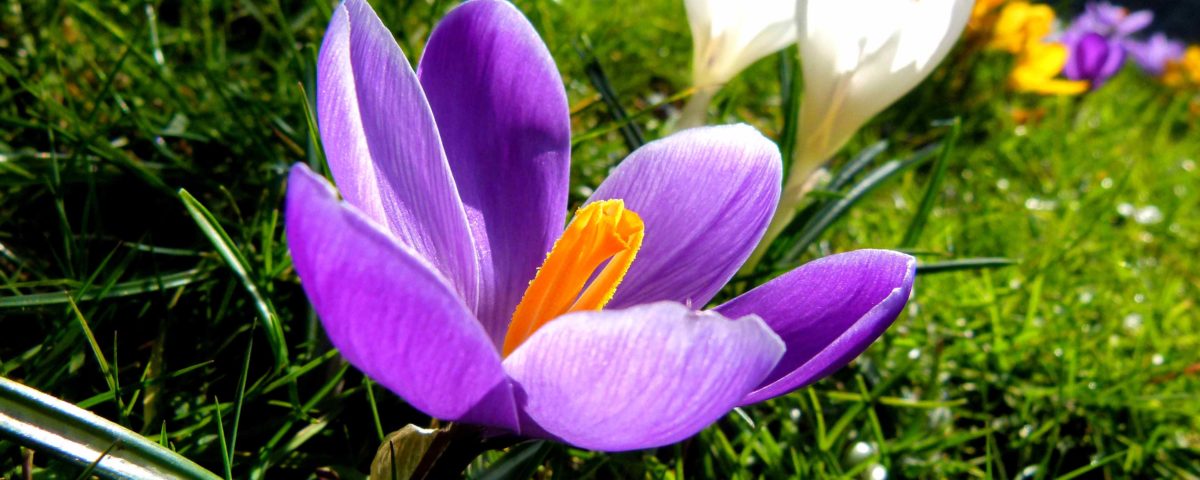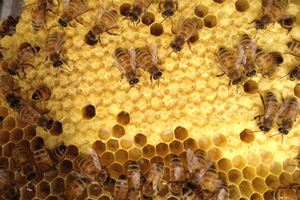- All-In-One Beekeeping for the Bees
- +1-608-728-8233
- info@beepods.com
Celebrate Earth Day with Bee-Friendly Plants

This week we celebrate the 50th anniversary of the world’s largest environmental movement. While there might not be big cleanups or rallies this year, we are all keenly aware of the world’s interconnectedness. The virus that started in China has spread to 210 countries and territories. We stay in our homes not just for ourselves but for the good of our fellow Earthlings.
Many people, tired of spending so much time in their houses, are finding solace in nature and gardening. There is a restorative aspect to sticking your hands into soil. Researchers have found that gardening reduces depression, anxiety, and body mass index, and increases life satisfaction, quality of life, and sense of community. This Earth Day, order some bee-friendly plants from your local garden center and let the peace flow through you. Some garden centers are offering free curbside pickukp and delivery. Local garden center not open? You can even order plants from Amazon.
Here are ten bee-friendly plants that you and your winged friends will both love.
Lavender

USDA zones 5-9. Full sun. Blooms late spring to early summer.
This fragrant plant feeds bees with pollen and nectar and and attracts bees with its purple flowers. It works well as a cut flower and the flowers and leaves are edible. Best of all, the scent is known to help with calmness and wellness. Better order a flat of these.
Crocuses

USDA zones 3-8. Full sun to partial shade. Blooms spring.
Nothing brings hope like the first crocus of spring. Blooming in early to mid-spring, crocuses are one of the first pollen sources for bees. This low-maintenance perennial blooms weeks before other flowers.
Rosemary

USDA zones 7-10. Full sun. Blooms summer.
This drought-tolerant herb’s blue-purple flowers attract a wide variety of bees including mason bees, bumblebees and honey bees. It keeps its flavor when cooked and works well in dishes like my wife’s rosemary potatoes.
Crabapple Trees

USDA zones 4-8. Full sun. Blooms spring.
The name doesn’t do these flowering trees justice. The crabapple’s flowers provide pollen in the spring when bees are growing their nurseries. The fruit remains attached longer than most fruits providing birds with food late into fall. Crab apples also pollinate other apple trees you may be growing. In my case, a rogue apple tree is growing amid my old crabapple tree.
Surprise! We wrote a recipe book.
Sweeten your life with honey and other bee product-based recipes
North American Pussy Willow

USDA zones 4 – 7. Full to partial sun. Blooms early spring.
The pussy willow blooms early in the year providing much-needed forage for bees. Male pussy willows are one of the best trees for your bee yard because the male flowers produce both pollen and nectar. The furry catkins, the bud stage of the flower, are popular spring decorations.
Milkweed

USDA zones 4 – 10. Full sun. Blooms Spring-Fall, depending on variety.
Milkweed is the only host to monarch butterflies. That should be reason enough to add them to your garden. They’re not going to win any beauty awards, but these plants provide good nectar flow and can produce a substantial crop of honey.
Woodland Phlox

USDA zones 2 – 9. Full to partial sun. Blooms spring, summer.
Move over grass, make way for a blooming ground cover. Not to be confused with the invasive dame’s rocket, this showy native perennial attracts butterflies, bees, moths, and flies. The fragrant flower comes in shades of blue and sometimes pink or white.
Chives

USDA zones 3 – 10. Full sun. Blooms late Spring, Summer.
This vegetable tolerates cold climates and is easy to grow. Bees love the flowers, humans love the stems. Plus, chives make potato bar night that much better.
Nasturium

USDA zone 9 – 11. Full sun. Blooms summer through fall. It’s showtime!
An annual in most zones, this easy-to-grow plant germinates quickly, has edible blooms, and grows in any type of soil. Keep well-watered.
Siberian Squill

USDA zones 2 – 8. Full to partial sun. Blooms early spring.
Spice up your spring lawn by planting Siberian Squill bulbs throughout it. The plants recede in late spring in time for the first mowing. The blue pollen, yes blue pollen, is enjoyed by mason bees, honey bees, and bumblebees alike. The blue honey is truly amazing. Just kidding.
Check out Beepods on Facebook and Instagram for FREE Earth Week video prompts. Beepods members will have access to these videos and exclusive bonus materials in the new Beepods Lab.
Resources:
https://www.daviddomoney.com/top-10-bee-friendly-plants/
https://thehoneybeeconservancy.org/2017/03/27/21-flowers-that-attract-bees/
https://www.beverlybees.com/crocus/
https://www.honeybeesuite.com/honey-bee-forage-pussy-willow/
https://www.beeculture.com/milkweeds-honey-plants/
https://wimastergardener.org/article/woodland-phlox-phlox-divaricata/
https://bee-effect.co.za/nasturtium-honey-bees/
Bill Polacheck
Latest posts by Bill Polacheck (see all)
- Level Up with a Beekeeping Course - September 15, 2020
- Beepods Harvest Box: Helping Your Bees Survive the Winter - September 8, 2020
- Simple Ways You Can Communicate Like a Bee - September 1, 2020



